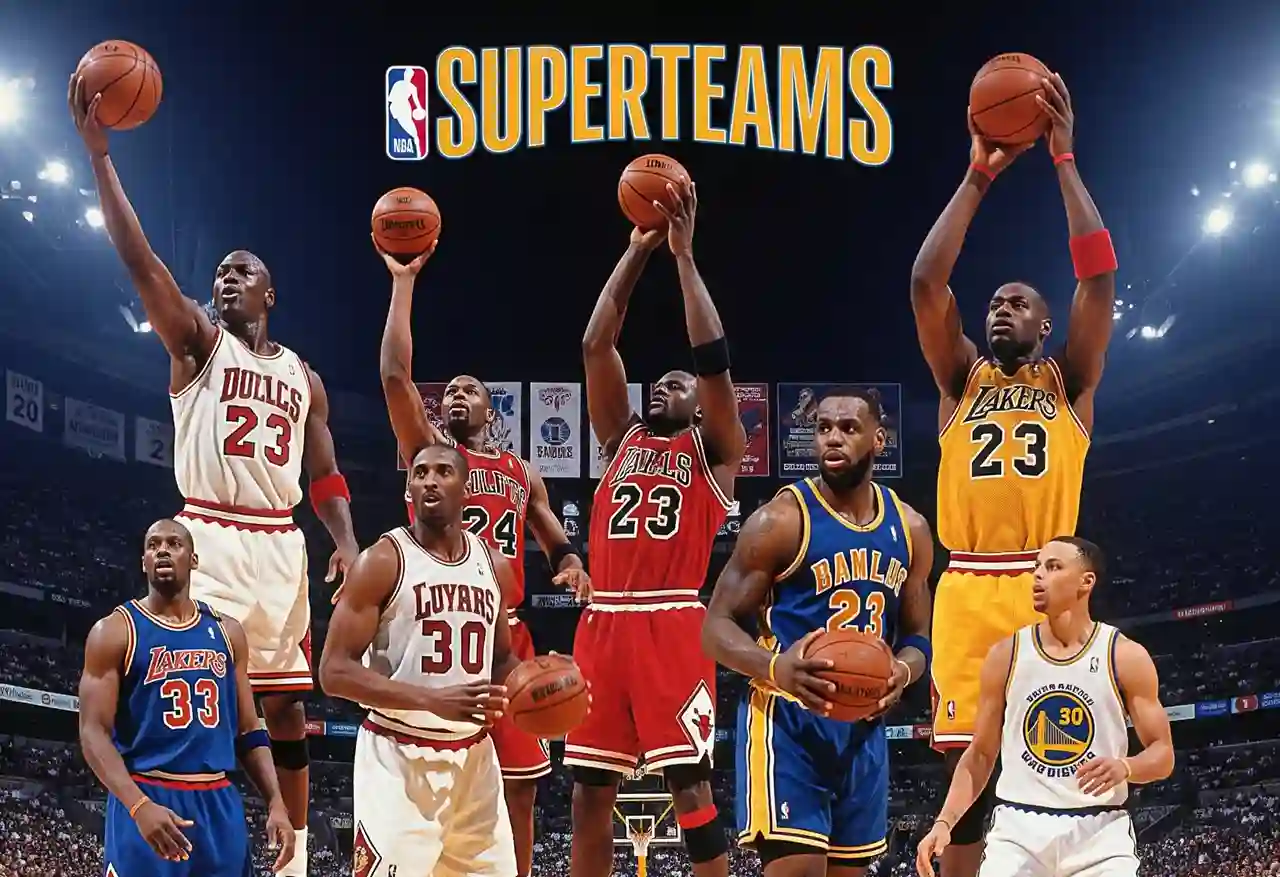When One Roster Equals Half the League
Superteams are a phenomenon NBA fans and analysts have long had mixed feelings about. On one hand — spectacle, hype, media buzz. On the other — concern for parity and fair competition.
The concept of a “superteam” isn’t new. Back in the 1980s, the Celtics and Lakers built rosters filled with multiple Hall of Fame-caliber stars. But it was the 21st century that turned this from an exception into a trend. In the era of free agency, social media, and powerful agents, players learned to team up, dictate terms, and form “their own” squads.
Is this a natural evolution — or a path toward the erosion of competitive integrity?
How Superteams Are Built
The formation of a superteam isn’t always the work of front office masterminds. Increasingly, it’s the players themselves who shape these lineups. Kevin Durant, LeBron James, James Harden — just a few of the stars who have deliberately joined rosters stacked with other elite talents.
The defining example: the Miami Heat of 2010. LeBron James, Dwyane Wade, and Chris Bosh joined forces in South Florida to dominate the Eastern Conference. The move sparked heavy criticism — with many claiming it destroyed competition by creating a shortcut to titles.
But the results were undeniable: two championships, four Finals appearances, and a new model of success — not building through years of drafts and development, but assembling instant victories in a win-now mode.
Superteams as a Business Engine
Today, the NBA is as much about entertainment as it is about sport. Superteams act as magnets for fans, sponsors, and media. Assembling several stars on one roster drastically boosts interest in games, ticket sales, and TV ratings.
Cities like Los Angeles, Brooklyn, and Phoenix — major media markets — saw the creation of superteams lead to not just athletic success but financial booms. Just recall how the Warriors’ valuation skyrocketed after Durant’s arrival in 2016, with merchandise sales featuring his name hitting league records.
These cases clearly reflect how the NBA is evolving into a full-fledged economic ecosystem. The audience wants a show, the league wants profit, and the players want rings. It seems like a winwin for everyone… or is it?
What Does the League Lose?
Behind the glitter of championships lie systemic concerns. When a team stacks three or four All-Star-level players, competitors are left with two options: hope for a collapse or try to copy the model. But not every franchise can offer warm weather, a massive market, or $40M contracts.
This narrows the title race to 3–4 contenders, while the rest of the league becomes mere regular-season participants. For fans, that means less intrigue; for teams — less motivation.
As NBA news highlights, this led the league to introduce a new collective bargaining agreement, which limits teams’ ability to re-sign multiple stars and increases luxury tax penalties. The goal: restore balance and make the NBA Playoffs a real competition — not a parade of the expected.
Case Studies: Who Made It Work?
Let’s look at some examples:
- Golden State Warriors (2017–2019): Already boasting Curry, Thompson, and Green, the team added Durant. The result: two titles and a legacy as one of the greatest teams ever. But after his departure — injuries and decline.
- Brooklyn Nets (2020–2022): Durant, Harden, Irving — a dream on paper. But in reality: injuries, drama, off-court issues. The superteam didn’t last even three full seasons.
- Boston Celtics (2008): Garnett, Pierce, Allen — a successful veteran trio that led to a title. But long-term dominance didn’t follow.
These cases show: a superteam is no guarantee of success. Egos, injuries, coaching — all matter. As NBA sport proves, a strong foundation beats flashy names.
How Does This Impact Young Players?
Superteams often hinder the growth of future stars. Young talents who join such teams frequently get overshadowed, receive fewer minutes, and develop more slowly. Take James Wiseman in Golden State or Austin Reaves in L.A. — great potential, but limited opportunities.
On the flip side, learning from veterans is valuable too. The key is balance. Young players need not just presence, but participation. Otherwise, the league could face a talent vacuum in 5–7 years.
What Role Does Team Culture Play?
Culture is everything. Superteams don’t win on talent alone. Every player must understand their role, accept limitations, and commit to the team’s success.
The 2000s Spurs and mid-2010s Warriors had superstars, but also systems. Tim Duncan never chased the spotlight. Steph Curry is a leader who defends first and shares the ball.
When the focus is on the collective — a superteam becomes a champion. When it’s every man for himself — it becomes expensive chaos.
What’s Next?
The league is trying to find balance. New salary rules, limits on player movement, and small-market protections are steps in the right direction. But the trend won’t disappear. Players want to win — and do it with friends, in comfortable environments.
The real intrigue lies in how mid-tier franchises adapt. Investing in the draft, developing young talent, and smart management are now weapons against superstars.
That’s why NBA news increasingly focuses not just on blockbuster trades but also on the smart moves of Oklahoma City, Sacramento, and Indiana. These teams don’t build superteams — they build teams with super ideas.
Conclusion
Superteams aren’t just a strategy for success — they challenge the NBA’s entire philosophy. They bring fame, revenue, and titles, but also pose risks to competitiveness, balance, and sports integrity.
The future of the league lies not in bans but in smart adaptation. The real show begins where everyone has a fair shot and a passion to compete. That’s when the NBA Playoffs become a battle not just of names — but of character.
The NBA evolves — and so do the rules of the game. Whether this leads to new harmony or the next wave of dominance, only time will tell.



